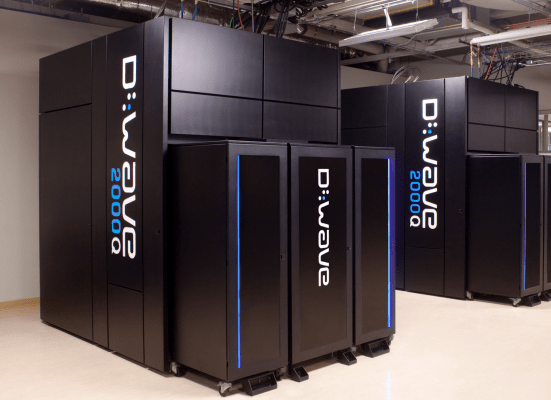D-Wave sticks with its approach to quantum computing - 4 minutes read
 D-Wave sticks with its approach to quantum computing – TechCrunch
D-Wave sticks with its approach to quantum computing – TechCrunchEarlier this month, at the WebSummit conference in Lisbon, D-Wave and Volkswagen teamed up to manage a fleet of buses using a new system that, among other things, used D-Wave’s quantum technology to help generate the most efficient routes. While D-Wave’s 2000Q only played a small part in this process, it’s nevertheless a sign that quantum computing is slowly getting ready for production use and that D-Wave’s approach, somewhat controversial in its early days, is paying off.
Unlike other players in the quantum computing market, D-Wave always bet on quantum annealing as its core technology. This technology lends itself perfectly to optimization problems like the kind of routing problem the company tackled with VW, as well as sampling problems, which, in the context of quantum computing, are useful for improving machine learning models, for example. Depending on their complexity, some of these problems are nearly impossible to solve with classical computers (at least in a reasonable time).
Grossly simplified, with quantum annealing, you are building a system that almost naturally optimizes itself for the lowest energy state, which then represents the solution to your problem.
Microsoft, IBM, Rigetti and others are mostly focused on building gate-model quantum computers and they are starting to see results (with the exception of Microsoft, which doesn’t have a working computer just yet and is hence betting on partnerships for the time being). But this is also a far more complex problem. And while you can’t really compare these technologies qubit to qubit, it’s telling that D-Wave’s latest machines, the Advantage, will feature 5,000 qubits — while the state of the art among the gate-model proponents is just over 50. Scaling these machines up is hard, though, especially given that the industry is still trying to figure out how to manage the noise issues.
D-Wave remains the only major player that’s betting on annealing, but the company’s CEO Vern Brownell remains optimistic that this is the right approach. “We feel more strongly about our decision to do quantum annealing now that there are a few companies that actually have quantum computers that people can access,” he said in an interview earlier this month.
“We have customers, Volkswagen included, that have run problems against those other computers and seeing what they can actually do and it’s vastly different. Our capability is many orders of magnitude faster for most problems than what you can do with other quantum computers. And that is because of the choice of quantum annealing. And that is because quantum healing is more robust to errors.” Error correction, he argues, remains the fundamental problem, and will hamper the performance of these systems for the foreseeable future. “And in order to move into the enterprise or any kind of practical application, that error correction needs to be wrestled with,” he noted.
Source: TechCrunch
Powered by NewsAPI.org
Keywords:
D-Wave Systems • Quantum computing • TechCrunch • Lisbon • D-Wave Systems • Volkswagen • Quantum technology • D-Wave Systems • Quantum computing • D-Wave Systems • Quantum computing • D-Wave Systems • Gambling • Quantum annealing • Optical fiber • Technology • Technology • Mathematical optimization • Routing • Sampling (statistics) • Quantum computing • Machine learning • Conceptual model • Computational complexity theory • Classical mechanics • Computer • Quantum annealing • Computer • Energy level • Microsoft • IBM • Logic gate • Scientific modelling • Quantum computing • Microsoft • Complex number • Technology • Qubit • D-Wave Systems • Machine • Qubit • Logic gate • Computer simulation • Machine • Real-time computing • D-Wave Systems • Chief executive officer • Quantum annealing • Company • Quantum computing • Volkswagen • Order of magnitude • Quantum computing • Quantum annealing • Deepak Chopra • Observational error • Error detection and correction • System • Future • Pragmatism • Application software • Error detection and correction •